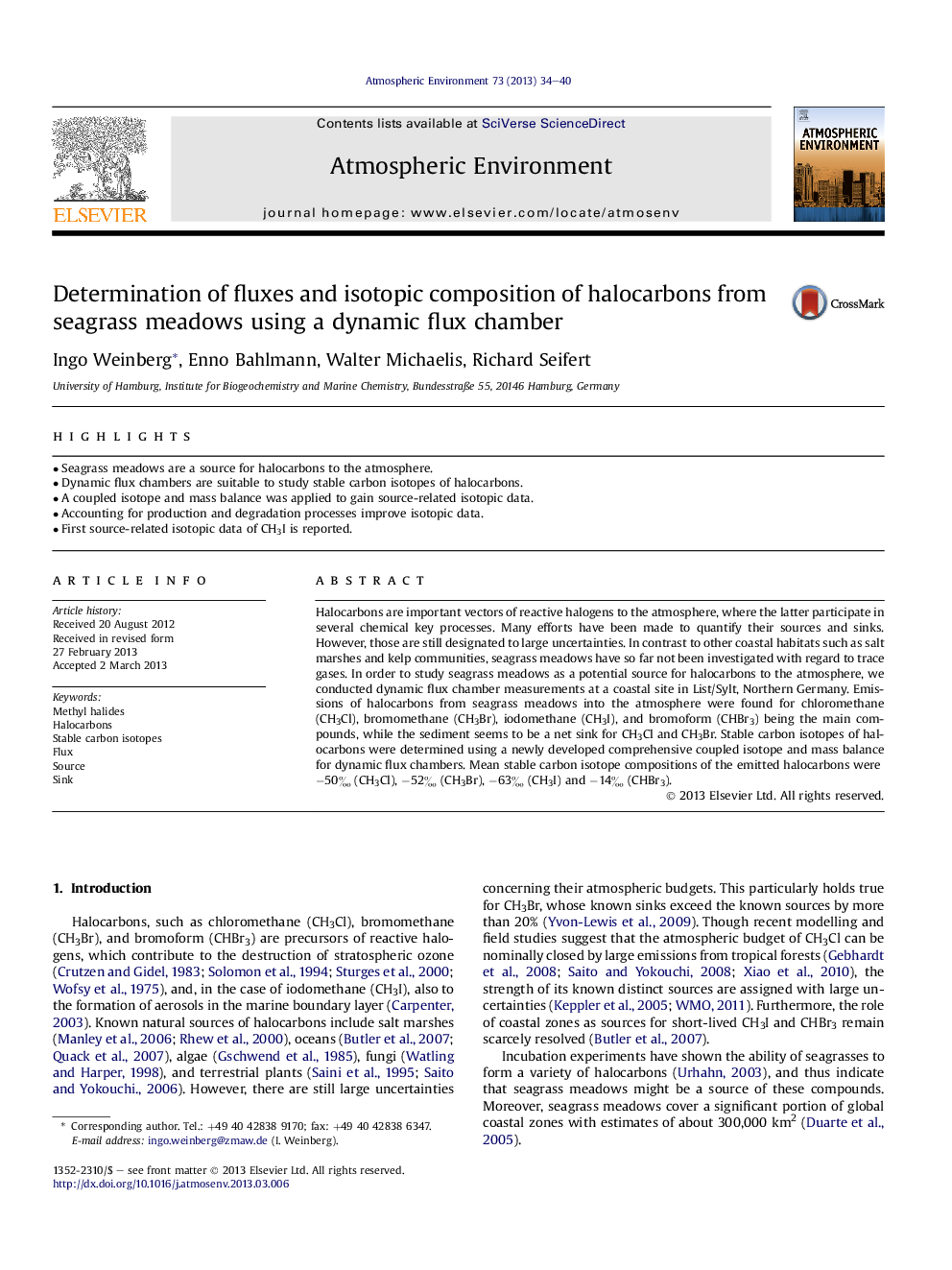| Article ID | Journal | Published Year | Pages | File Type |
|---|---|---|---|---|
| 4438219 | Atmospheric Environment | 2013 | 7 Pages |
•Seagrass meadows are a source for halocarbons to the atmosphere.•Dynamic flux chambers are suitable to study stable carbon isotopes of halocarbons.•A coupled isotope and mass balance was applied to gain source-related isotopic data.•Accounting for production and degradation processes improve isotopic data.•First source-related isotopic data of CH3I is reported.
Halocarbons are important vectors of reactive halogens to the atmosphere, where the latter participate in several chemical key processes. Many efforts have been made to quantify their sources and sinks. However, those are still designated to large uncertainties. In contrast to other coastal habitats such as salt marshes and kelp communities, seagrass meadows have so far not been investigated with regard to trace gases. In order to study seagrass meadows as a potential source for halocarbons to the atmosphere, we conducted dynamic flux chamber measurements at a coastal site in List/Sylt, Northern Germany. Emissions of halocarbons from seagrass meadows into the atmosphere were found for chloromethane (CH3Cl), bromomethane (CH3Br), iodomethane (CH3I), and bromoform (CHBr3) being the main compounds, while the sediment seems to be a net sink for CH3Cl and CH3Br. Stable carbon isotopes of halocarbons were determined using a newly developed comprehensive coupled isotope and mass balance for dynamic flux chambers. Mean stable carbon isotope compositions of the emitted halocarbons were −50‰ (CH3Cl), −52‰ (CH3Br), −63‰ (CH3I) and −14‰ (CHBr3).
